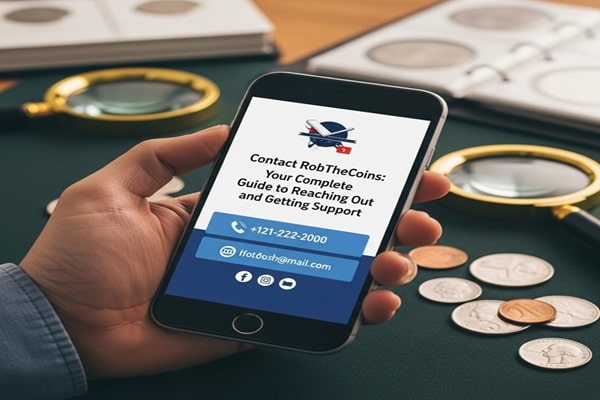Essential Email Marketing Statistics Guide: Success Metrics for 2025
Share your love
Email marketing stats show why this channel continues to dominate business strategies in 2025. People send nearly 376 billion emails each day. This number should hit 408 billion by 2027. Email's reach makes it an unstoppable force. New marketing channels keep emerging, but email delivers exceptional results. The numbers speak for themselves – $36 generated for every $1 spent, resulting in a 3600% ROI.
This detailed guide will show you the latest email marketing trends and effectiveness metrics. Recent data proves email marketing's position as the top ROI-driving channel for B2C brands in 2024. The channel outperforms paid social media and content marketing efforts.
B2C brands see higher conversion rates at 2.8% compared to e-commerce's average of under 2%. The global email user base should reach 4.6 billion people by 2025. Automated emails make 320% more revenue than non-automated campaigns. These numbers demonstrate email marketing's power to stimulate business growth.
Email marketing statistics in 2025
Email's explosive growth shows no signs of slowing as we move through 2025. The latest marketing data reveals some remarkable statistics about its expanding reach and influence. Email isn't declining – it's growing steadily in both users and daily usage.
Global email user growth
The worldwide email audience has hit record levels in 2025. Recent projections show the global email user base stands at 4.6 billion people, a huge jump from 4 billion users in 2020. This means about 600 million new email users joined in just five years.
Some researchers suggest even bigger numbers. Their estimates put the current user base at 4.83 billion in 2025. This growth trend looks set to continue, with numbers expected to reach 5.61 billion by 2030. That's a compound annual growth rate (CAGR) of 3.4%.
What's behind this massive growth? Emerging markets lead the charge, with India and Nigeria making up 28% of new users. The 65+ age group is growing fast too, with a 6.1% CAGR. The shift to remote work and education after the pandemic has sped up adoption across every age group.
The average email user now has 1.86 email accounts. This pushes the total number of email accounts worldwide to about 8.3 billion. People tend to keep their personal and professional communications separate, which explains this multi-account trend.
Daily email volume trends
The number of emails sent each day is mind-boggling. People send about 376.4 billion emails every day in 2025, up from 361.6 billion in 2024. That works out to 4.2 million emails every second worldwide.
These numbers will keep climbing. Daily email volume should hit 408.2 billion by 2027, growing at about 4% yearly. Some experts predict even higher numbers – one study suggests 392 billion daily emails in 2025, rising to 523 billion by 2030.
Several key factors drive this growth:
- AI-generated CRM communications
- IoT device alerts
- Hybrid work adoption
- Regulatory compliance notices
- Micro-targeted advertising through AMP emails
How often people check email
Email has become a core part of daily life worldwide. A whopping 93% of people use email daily, making it one of our most-used digital tools. Most people start their day with it – 58% check their email first thing, before search engines, social media, or news sites.
People check their email frequently throughout the day. Research shows 42% of users look at their email 3-5 times daily. Professional users check even more often – some studies show an average of 15 checks per day.
Different reasons drive people to check their email. 79% look for work messages, while 41% check for family updates, friend communications, or brand discounts. Email checking has become second nature – people do it while watching TV (69%), lying in bed (57%), and even on vacation (79%).
Email remains the top communication tool across age groups, though usage patterns vary. About 59% of Millennials mainly check email on smartphones, while this number jumps to 67% for Generation Z. This trend highlights why mobile optimization matters so much to email marketers.
Key performance metrics to track
The right email marketing metrics tell you if your campaigns work and where you need to improve. Let's get into the most important numbers that show how well emails perform as we look at 2025 email marketing statistics.
Open rate measures by industry
Your email's open rate shows how many people opened your message. This tells you if your subject lines work and if people care about your content.
The average open rate in 2025 is 42.35% – way up from past years. But there's a catch: Apple's Mail Privacy Protection program has pushed these numbers up since 2021. It loads emails automatically, so they look "opened" whatever the recipient does.
Religious groups have the best open rates at 59.70%. Hobby-related emails come next at 53.33%, with non-profit/travel close behind at 53.21%. Travel and transportation emails don't do so well, with just 22.57% of people opening them. Publishing (30.91%) and e-commerce (31.08%) also don't get much attention.
A good open rate usually sits between 20% to 40%, but this changes a lot by industry. To cite an instance, health and fitness emails hit 48.9%, while retail averages 38.58%.
Click-through and conversion rates
Click-through rate (CTR) shows how many people clicked links in your email. This is a better way to measure engagement than open rates. The average CTR in 2025 is 2.00%, dropping to 1.8% for marketing emails.
Different industries see very different CTRs:
- Hobbies: 4.36% (highest)
- Government: 4.31%
- Media: 4.02%
- Travel and transportation: 0.77% (lowest)
What makes a good CTR? Anything from 1% to 5% works fine, and anything above 3% is a big win. B2B and SaaS companies usually hit 3-5% CTR because they target their content better.
Conversion rate might be your most vital metric.
It shows how many people did what you wanted after clicking. Email marketing's average conversion rate is 15.22%, and some brands reach 23%. The math is simple: take the number of people who took action, divide it by delivered emails, then multiply by 100.
Automated emails are a game-changer with 2,361% better conversion rates than regular campaigns. The games industry has seen amazing growth – their click-to-conversion rate jumped from 11.6% in 2023 to 17.61% in 2025.
Bounce and unsubscribe rates
Your bounce rate tells you how many emails didn't make it. Keep it under 2% and you're good. 2-5% means watch out, and anything over 5% spells trouble.
Bounces come in two flavors:
- Hard bounces: Emails that fail because addresses don't exist
- Soft bounces: Temporary problems like full inboxes
Publishers have the lowest bounce rates at 0.2%. Architecture and construction see higher rates around 1.32%.
The unsubscribe rate shows how many people opt out after getting your email. This tells you if your content hits the mark. The average rate is tiny at 0.08%, and anything under 0.2% is excellent.
Authors see the highest unsubscribe rates at 0.21%. Nine industries including non-profit, travel, and religion reported perfect 0.00% rates. People usually unsubscribe because they get too many emails (69%), the content isn't relevant (56%), or it's not what they expected (51%).
These core metrics are the foundations of better email marketing. They help you make evidence-based tweaks to your strategy throughout 2025.
The impact of mobile on email marketing
Mobile devices have transformed how audiences interact with email marketing. This transformation creates new chances and challenges for marketers in 2025. 88% of people checking their emails from their mobile phones shows why marketers must understand how mobile devices affect their email marketing success.
Mobile vs desktop open rates
Current statistics clearly show mobile's dominance in email consumption. Mobile clients now account for 41.6% of email opens, followed by webmail opens at 40.6% and desktop opens at only 16.2%. Research reveals even stronger mobile usage patterns. 60% of email campaigns being opened on mobile devices, compared to just 10% on desktops and 29% on webmail clients.
Device-specific data shows more people open mobile emails on an iPhone than any other device at 28.4%, followed by iPad at 9.3% and Google Android at 2.3%**. This mobile-first pattern stays consistent. The time of day plays a crucial role in how users read emails on different devices.
Mobile users behave differently from desktop users. Mobile click-to-open rates are 30% higher than desktop rates. However, desktop users often show higher click-through rates (CTR) and click-to-open rates (CTOR). This makes sense because mobile users open emails more often but scan content quickly. Desktop users spend more time reading and clicking through emails when they get involved.
Why mobile optimization matters
Poor mobile optimization comes with serious risks. 71.6% of consumers will delete emails if they don't look good on mobile. Only about 10% will read them anyway. 45% of consumers have unsubscribed from promotional emails because the emails or website didn't work well on their smartphone.
The situation gets worse. 34% of consumers have marked promotional emails as spam because they didn't work well on their smartphone. This behavior can hurt your sender's reputation and damage deliverability across your email program.
Email providers and search engines have noticed these trends. Gmail will automatically mark emails as spam if they are not optimized for mobile. This can substantially reduce the chances of your emails reaching your target audience's inbox. Emails not optimized for mobile have a 29% lower inbox placement rate than those that are optimized.
The financial stakes are high. Each USD 1.00 spent on email marketing generates a USD 45.00-51.00 return, but this happens only when your emails reach and engage your audience.
Best practices for mobile-friendly emails
Mobile-friendly emails need attention to several essential elements:
- Design responsively: 80% of brands now always send emails optimized for mobile and tablet. Responsive design works best as it adjusts to fit any screen size. Responsive email design usage has increased to 50%. Click-to-open rates are 40% higher for brands that send exclusively responsive emails (14.1%) versus brands that only send non-responsive emails (10.1%).
- Optimize subject lines and preheaders: Mobile devices display just 25-30 characters of an email's subject line. Preheader length varies by device from 40-90 characters. A length of 40-50 characters works best across platforms.
- Keep content scannable: The average time spent reading a newsletter is only 51 seconds. Short paragraphs, headers, and bullet points help readers scan quickly. Emails with three or fewer images and 20 lines of text see the highest click rates.
- Make CTAs touch-friendly: The average adult index finger is between 1.6cm and 2cm. This requires buttons between 45-57px on mobile devices. Buttons should be at least 44×44 pixels. Leave enough space between clickable elements to prevent accidental taps.
- Test across devices: Your emails need testing on multiple devices and email clients to ensure they look and work consistently.
73% of companies prioritize mobile optimization in their email marketing campaigns. This has become a basic requirement rather than a competitive edge. These mobile-friendly practices help marketers reach and engage their growing mobile audience in 2025 effectively.
How automation boosts email effectiveness
Automated email campaigns have become the most powerful revenue generators in the email marketing world of 2025. These pre-programmed messages respond to specific customer behaviors and deliver relevant content at the right time without marketing teams having to intervene.
Revenue from automated emails
Email automation's effect on revenue stands out clearly. Businesses now see a $36 return for every $1 invested in email marketing, which means a 3600% ROI. Automation takes this even further—automated emails generate 320% more revenue than non-automated campaigns.
The numbers tell an impressive story. Automated emails get 119% higher click-through rates than standard broadcast emails, which shows stronger customer engagement. These engaged customers convert better too—automated emails convert 2,361% better than regular campaigns.
What's even better, automated emails now bring in up to 30x more revenue per recipient (RPR) than one-off campaigns. Abandoned cart flows average $3.65 RPR while standard email campaigns only manage $0.11. This explains why automated emails make up 37% of all email-generated sales despite being just 2% of email volume.
Top-performing automation types
Three categories of automation stand out with exceptional results:
- Welcome series – These emails generate 320% more revenue per email than promotional ones and earn $2.65 per recipient on average. The best performers achieve a 10.53% placed order rate.
- Abandoned cart reminders – With a 41% open rate, these emails earn the highest revenue per recipient, averaging $3.65. Customers who get abandoned cart emails are 2.4x more likely to buy.
- Browse abandonment flows – Messages in this category achieve a 5.48% click rate, which beats most other automation types. They help bring users back to products they looked at but didn't buy.
Other successful automations include post-purchase emails with 61.68% open rates, product review requests, replenishment reminders, and back-in-stock notifications. Some brands have grown their flow revenue by 157.8% year-over-year using VIP customer exclusive emails.
Timing and triggers that work
Automated emails work well because they use triggers to send messages when customers are most likely to respond. Messages arrive at peak engagement moments instead of random times.
Triggers based on behavior work better than time-based ones. Popular triggers include:
- Action completion: List subscriptions, purchases, or specific link clicks
- Action abandonment: Unpurchased cart items or browsing without buying
- Time milestones: Birthdays, subscription anniversaries, or replenishment timing
- Engagement patterns: Email opens without clicks or periods of no engagement
Timing plays a vital role too. Transactional emails get 8x more opens and clicks than other emails and can bring in 6x more revenue. This happens because they arrive right after purchase when engagement peaks.
List segmentation makes these benefits even stronger—78% of marketers say they can't work without list segmentation features. Smart segmentation helps create targeted messages that can recover 5-10% of lost sales.
Automated emails create better customer connections through relevant content and perfect timing. They send the right message to the right person at the right moment—making them the best tool for email marketing in 2025.
Personalization and segmentation trends
Email personalization and segmentation have become key success factors in 2025's increasingly crowded inboxes. Consumer expectations continue to rise, and simple personalization tactics now give way to sophisticated, analytical approaches that deliver precisely tailored content to each recipient.
Subject line personalization stats
Subject lines create the first impression for email campaigns, and personalization significantly improves engagement. Emails with personalized subject lines are 26% more likely to be opened and can increase open rates by at least 50%.
Simple personalization has been standard practice for years, yet only 36% of marketers prioritize personalizing subject lines or preview text.
Different types of personalization yield varying results. Recipients' names in subject lines achieve the highest average open rate at 43.41%, while company name personalization reaches 35.65%. Small changes make an impact—adding "free" increases open rates by 10%, and urgent subject lines boost opens by 22%.
The effectiveness of once-innovative personalization elements has changed. Subject lines without emojis now show better open rates (42.23% vs 37.5%) and click-through rates (4.16% vs 3.32%) compared to those with emojis.
Behavior-based segmentation results
Behavioral segmentation has emerged as the gold standard for email personalization. Companies that group subscribers based on actions and engagement patterns report 760% increased revenue and can cut customer acquisition costs by up to 50%.
Automated triggers particularly excel with this approach. Air New Zealand's behavior-triggered pre-flight emails achieved remarkable 69% open rates and 38% click rates. BustedTees' revenue jumped 8% overnight by tailoring email send times to individual open behaviors.
Today's consumers (72%) expect personalized messages, and 76% are more likely to buy from brands delivering personalized content. The data shows 78% of consumers tend to recommend and repurchase from companies that personalize their communications.
AI-driven personalization in 2025
AI has reshaped email personalization, with 45% of companies utilizing AI in their email marketing. Another 21% aim to blend AI into their email workflows by 2025's end, recognizing its potential to reshape the scene.
The numbers tell a compelling story—47% of marketers report "extremely positive impacts" from AI-powered email campaigns, and 50.7% say AI-improved emails perform better than traditional messages. HubSpot's research reveals 78% of marketers saw better email engagement through AI personalization last year.
AI excels at analyzing behavior patterns to predict optimal send times and content priorities. One marketer's experience shows "A/B testing improved 10x using generative AI", which enabled testing beyond subject lines by including user behavior analysis. This sophistication enables true 1:1 personalization for individual recipients rather than just customer segments.
Generative AI's capabilities now extend to creating unique personalization for every email recipient. This advancement moves beyond traditional segmentation to craft individual-specific messages that can boost open rates by 26% at scale.
Email marketing benchmarks by industry
Email marketing statistics show remarkable differences in performance among business sectors in 2025. These standards help marketers create realistic goals that match their industry's unique characteristics.
Retail vs tech vs education
The education sector leads the pack with a strong 28.5% open rate and 4.4% click-through rate. Retail has the lowest open rates at 17.1%, but shows promise with a 4.5% year-over-year increase. Tech and software companies hold steady with 22.7% open rates and 2.0% click-through rates.
Manufacturing presents an interesting case with the lowest open rate (32.65%) but achieves the highest click-through rate (4.29%). That indicates their subscribers are highly engaged.
B2B vs B2C performance differences
B2B and B2C email marketing take different paths to success. B2B emails lean toward a formal tone that highlights product features and benefits. B2C messages keep things conversational and appeal to emotions. B2B campaigns focus on building relationships with less frequent sends.
B2C emails come more often and push sales harder. B2B segments target specific industries and job roles, while B2C looks at demographics and buying patterns. The success metrics tell different stories too. B2B cares about open rates and conversions, while B2C values social shares and engagement.
Holiday season email stats
Holiday season brings peak email engagement. November and December see the most inbox activity. Black Friday leads with 116.5 million emails. Cyber Monday follows with 106 million, and Thanksgiving rounds it out with 95 million. Emails drive 20% of holiday site visits.
Customers who get email offers spend 138% more than those who don't. November 2024 broke records as Black Friday and Cyber Monday events pulled in $112.60 billion in revenue. Notwithstanding that higher volume, engagement stays strong with Black Friday emails hitting 13% click-through rates.
Conclusion
Email marketing remains the most effective tool for businesses in 2025. It keeps delivering great results even as new marketing channels emerge. The numbers in this piece show why email still rules the digital world with a 3600% ROI. Without doubt, very few marketing strategies can match email's power to generate $36 for every $1 spent.
These numbers look even better when you consider email's worldwide growth. About 4.6 billion users send more than 376 billion emails each day. This reach spans every age group and demographic. On top of that, 93% of people check their email daily, making it a vital part of the customer's path to purchase.
The numbers show what makes some email campaigns succeed while others fail. Mobile-friendly design isn't optional anymore – 88% of users read emails on their phones. When emails don't work well on mobile, 71.6% of people delete them right away.
Automation has changed how email marketing works. Automated emails bring in 320% more money than regular campaigns and need less work from marketing teams. Welcome emails, cart reminder messages, and browse reminder sequences bring the best results.
Personal touches in emails have become necessary for success. Adding someone's name to subject lines gets 26% more opens. Smart audience grouping based on behavior can boost revenue by 760%. AI tools make these benefits even stronger, with 47% of marketers seeing "very positive results" from AI-driven campaigns.
Looking at industry measures helps set realistic targets for your business type. Schools, stores, and tech companies show different patterns in how people open and interact with emails.
While methods may change, these statistics prove that email will stay vital to marketing success through 2025 and beyond. Companies that make mobile-friendly emails, use automation, add personal touches, and track industry standards will see the best results from their email marketing efforts.
FAQs
Q1. What are the key email marketing trends for 2025?
Hyper-personalization, powered by AI and machine learning, is crucial for email marketing success in 2025. Other trends include dark mode optimization, integrated shopping options within emails, and interactive elements to boost engagement and conversions.
Q2. How many email users are there globally in 2025?
There are approximately 4.6 billion email users worldwide in 2025. This number is expected to grow to over 4.8 billion by 2027, showcasing the continued expansion of email as a communication channel.
Q3. What is the average daily volume of emails sent in 2025?
Nearly 376 billion emails are sent each day in 2025. This number is projected to increase to 408 billion by 2027, highlighting the growing importance of email in both personal and professional communications.
Q4. Is email marketing still effective in 2025?
Yes, email marketing remains highly effective in 2025. It continues to be the most profitable owned channel for enterprise and high-growth B2C brands. Many marketers consider it a crucial marketing channel due to its high return on investment and ability to reach a wide audience.
Q5. What is the average return on investment (ROI) for email marketing in 2025?
The ROI for email marketing in 2025 is impressive. For every $1 spent on email marketing, 35% of marketing leaders receive between $10 and $36 in return, while 30% receive between $36 and $50. This demonstrates email marketing's continued effectiveness as a high-ROI channel.




